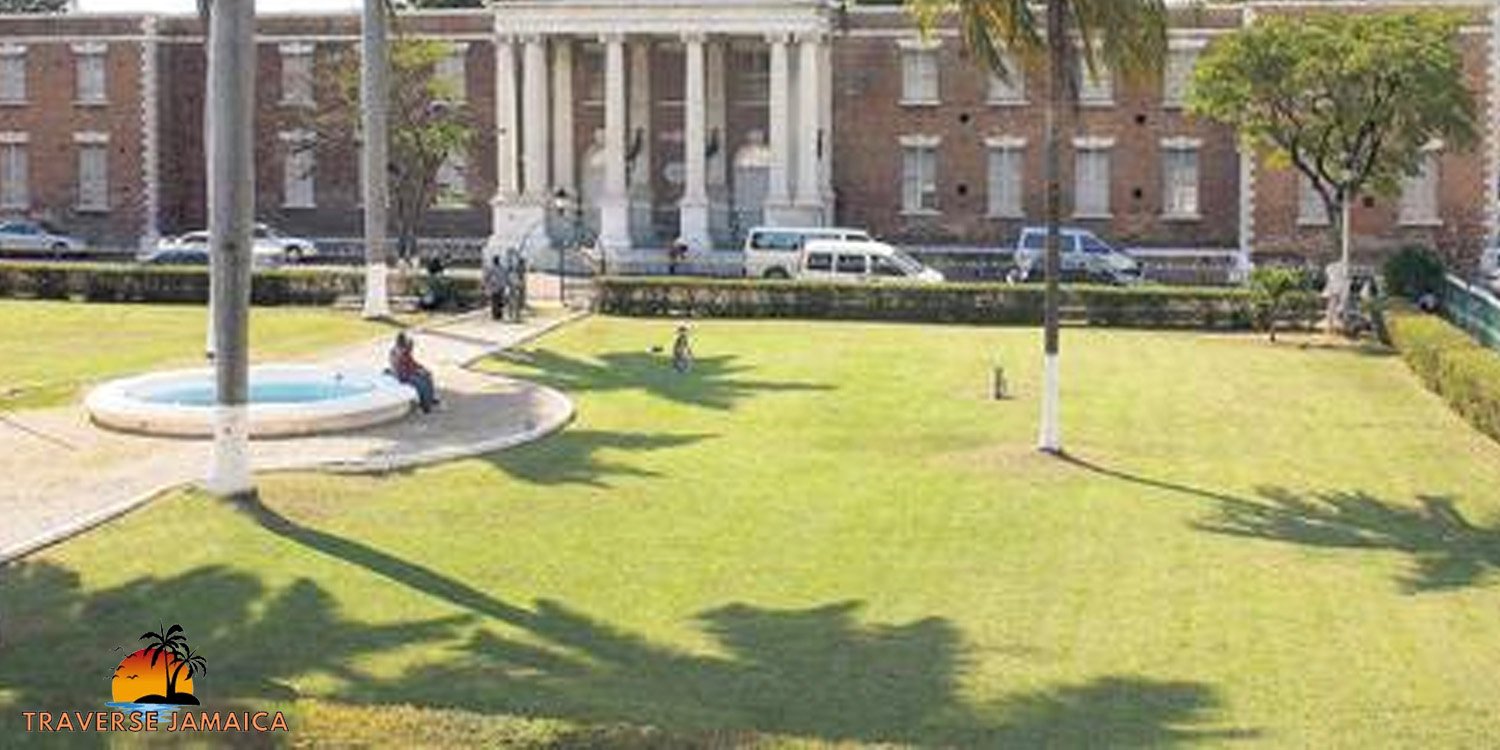Emancipation Square in Spanish Town, Jamaica, stands as a monument to the island’s rich colonial history and enduring struggle for freedom. Often considered one of the most historically significant places in Jamaica, Emancipation Square is a compelling destination for history enthusiasts and tourists alike. This article delves into the origins, architectural highlights, and cultural importance of Emancipation Square, capturing its role as a lasting symbol of resilience and liberation.
1. Historical Origins of Emancipation Square
Emancipation Square, located in the heart of Spanish Town, dates back to the 18th century when it served as the administrative and political center of Jamaica. Originally known as Parade Square, this central plaza was constructed during British colonial rule and functioned as the epicenter of government operations. Spanish Town itself was the capital of Jamaica until 1872, which underscored the square’s significance within the island’s governance and colonial history.
Following the abolition of slavery in 1834, the square was renamed Emancipation Square in honor of the historic event. This renaming not only marked the end of slavery but also symbolized a new era for Jamaicans, highlighting the square as a place where the journey toward freedom and justice was publicly recognized.
2. Architectural Highlights
Emancipation Square is a treasure trove of Georgian architecture and holds some of the oldest and most well-preserved colonial buildings in the Caribbean. Key architectural features include:
- The Old House of Assembly: This building was where the Jamaican colonial government met, and it’s often hailed as one of the finest examples of 18th-century architecture on the island. Though it was partially destroyed by fire, the remnants of this structure evoke a sense of the colonial grandeur of its time.
- Rodney Memorial: Built in 1801, this monument commemorates British Admiral Lord Rodney and his victory against the French. The statue is iconic, though controversial, and stands as a reminder of British influence over Jamaica during the colonial period.
- The Court House: Originally built in 1819, the courthouse stands as a notable example of Georgian architecture with its grand columns and intricate detailing. It was an active government building until the 1980s, representing centuries of legal and administrative history.
These structures collectively provide visitors with a unique opportunity to experience Jamaica’s colonial past through the lens of well-preserved architecture. Emancipation Square’s buildings showcase the skill of Jamaican craftsmen and the influence of British architectural styles, blending European design with local adaptations suited to the tropical environment.
3. Cultural and Social Significance
Emancipation Square is more than just a historical site; it serves as a symbol of Jamaica’s journey from colonial subjugation to independence. The renaming of the square itself to “Emancipation Square” was a profound gesture that transformed the space from a symbol of colonial governance to one of liberation and resilience. Today, it stands as a gathering place for national celebrations and a venue for civic events that emphasize Jamaican culture and heritage.
The square is also the site of annual Emancipation Day celebrations, where Jamaicans gather to honor the memory of enslaved ancestors and reflect on their legacy of resistance and strength. Emancipation Day festivities, often filled with music, dance, and ceremonial readings, bring the community together and keep the memory of emancipation alive in the public consciousness.
4. Emancipation Square as a Tourist Destination
Emancipation Square has become an essential stop for tourists seeking to explore Jamaica’s historical roots. Guided tours through the square offer visitors insights into the buildings, monuments, and history that shaped Jamaica’s society. The square is particularly popular among heritage tourists and those interested in understanding Jamaica’s journey from colonization to freedom.
For those visiting Emancipation Square, it’s not just about admiring the architecture or reading plaques—it’s about stepping into a space that once held power over Jamaican lives, witnessing the physical structures that have stood through centuries of social change, and reflecting on the enduring impact of those changes.
5. Preservation Efforts and Future Prospects
While Emancipation Square remains a key historical site, preserving its structures has been a significant challenge. Jamaica’s tropical climate and periodic natural disasters have taken a toll on the buildings over the years. Conservation groups, along with government initiatives, have made concerted efforts to preserve and restore the square’s historic buildings. Through these preservation projects, Emancipation Square continues to retain its historical charm and cultural relevance, ensuring that future generations can experience and learn from this symbolic location.
Conclusion
Emancipation Square in Spanish Town, Jamaica, encapsulates a pivotal part of the island’s past and stands as a testament to the resilience and cultural pride of the Jamaican people. From its Georgian architecture to its role as a site of emancipation celebrations, the square invites reflection on the long and complex journey toward freedom and justice in Jamaica. Emancipation Square remains an enduring symbol of heritage, resilience, and hope—qualities that define the spirit of Jamaica itself.









